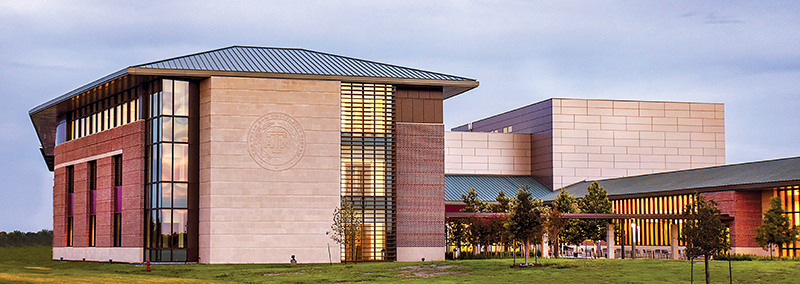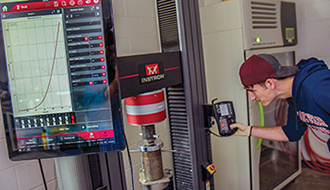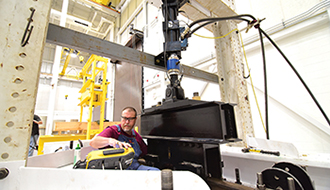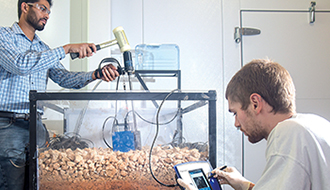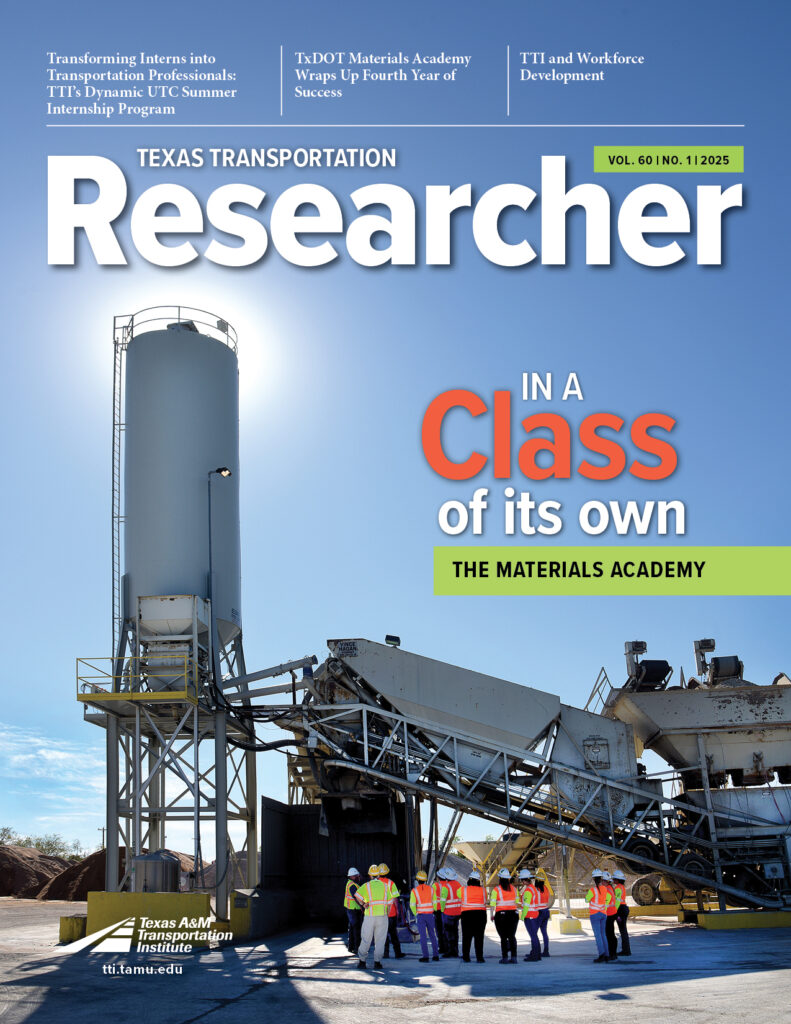CIR: Pioneering the Future of Transportation
FROM VOLUME 59, NUMBER 2 (2023)

FROM VOLUME 59,
NUMBER 2 (2023)
Funding for CIR was granted by the Texas Legislature in 2015 through a unique partnership between the Texas A&M Transportation Institute (TTI), the Texas A&M Engineering Experiment Station (TEES), the Texas A&M College of Engineering (CoE) and the State of Texas. After approximately 17 months of construction, CIR officially opened its 138,000-square-foot facility in 2018 and has since cemented itself as a center for innovative and transformative research.
“Through CIR, we have created a unique platform that brings together brilliant minds, cutting-edge technology and state-of-the-art facilities,” says Anand Puppala, CIR director and professor in Texas A&M University’s Zachry Department of Civil and Environmental Engineering. “Our researchers are driven by a common goal: to develop innovative solutions that not only address the current infrastructure needs but also pave the way for a sustainable and resilient future. Their work is a testament to our commitment to shaping a better tomorrow for our communities.”
With such a unique and robust workforce across TTI, TEES and CoE, CIR offers 12 state-of-the-art laboratories focused on conducting research across nine critical infrastructure sectors: transportation systems, chemical, communications, critical manufacturing, smart energy, information technology, nuclear reactors, materials and waste, and water and wastewater systems. These areas have been identified as critical needs for our nation, and CIR is at the forefront of addressing the challenges and opportunities they present.
“Our state-of-the-art laboratories stand at the forefront of innovation and research,” states Edith Arámbula Mercado, CIR deputy director and TTI research engineer. “They are the proving grounds where ideas are materialized and the future of transportation and infrastructure is forged. These laboratories demonstrate our unwavering commitment to shaping a better future through cutting-edge research and collaboration.”
As the facility seeks to expand to fulfill the research needs associated with a growing population — and thus an increased strain on the nation’s infrastructure — securing new and unique partnerships and providing technology transfer in workforce development are critical topics the center hopes to address in the coming years. To help accomplish these goals, CIR established the CIR Advisory Panel (CAP), comprised of key industry members dedicated to solving industry infrastructure-engineering problems through research and workforce development. CAP members can advocate on future research directions in the infrastructure field and provide networking opportunities as appropriate.
Asphalt Innovation Laboratory
The Asphalt Innovation Laboratory — accredited by the American Association of State Highway and Transportation Officials — includes state-of-the-art equipment and world-class researchers dedicated to investigating, developing and deploying improvements in asphalt technology. A better understanding of asphalt through the innovations developed in this lab is leading to the development and implementation of pavements that rut and crack less, are longer lasting, and ultimately cost less over their designed life.
Geotechnical and Unbound Materials Innovation Laboratory
Infrastructure systems are only as good as the foundation on which they are built. Much of our existing infrastructure is in dire need of foundational upgrades or rehabilitation. The Geotechnical and Unbound Materials Innovation Laboratory allows researchers to investigate soil stabilization and rehabilitation techniques that can be implemented in both the short and long term.
Structural and Materials Testing Laboratory
For more information, Contact
Edith Arámbula Mercado
CIR will serve as a crucial facility in the next five years for TTI, TEES and CoE as they collaborate with Prairie View A&M University on their National Center for Infrastructure Transformation tier-1 University Transportation Center.
“Our state-of-the-art laboratories stand at the forefront of innovation and research. They are the proving grounds where ideas are materialized and the future of transportation and infrastructure is forged. These laboratories demonstrate our unwavering commitment to shaping a better future through cutting-edge research and collaboration.”
Edith Arámbula Mercado, CIR Deputy Director and TTI Research Engineer
